#hunger magazine 2021
Photo

2004 Aqua Teen Hunger Force and Sealab 2021 DVDs Magazine Ad
#dvds#print ads#magazine ads#adult swim#cartoons#cartoon network#sealab#sealab 2021#aqua teen hunger force#2004#2000s
133 notes
·
View notes
Text

Today In History
Dick Gregory, comedian, civil rights leader and vegetarian activist, was born in St. Louis, MO on this date October 12, 1932.
Gregory no-holds-barred brand of comedy in the 1960s attacked racial prejudice, bigotry and racism in the United States. By addressing his hard-hitting satire to white audiences, he gave a comedic voice to the rising civil rights movement.
He generated particular attention for his many hunger fasts. At this time he became a vegetarian, a marathon runner, and an expert on nutrition. He soon began a successful business venture with his nutritional product, the “Bahamian Diet,” around which he built Dick Gregory Health Enterprises, Inc. Through his company, he targeted the lower life expectancy of Black Americans, which he attributed to poor nutrition, drugs and alcohol abuse.
Gregory wrote many books, including Nigger: An Autobiography (1964) and No More Lies: The Myth and the Reality of American History (1971).
He made a brief return to the comedy circuit in the mid-1990s. The One and Only Dick Gregory, a documentary about his life and career, appeared in 2021.
Dick Gregory… One of a kind.
CARTER™️ Magazine
#carter magazine#carter#historyandhiphop365#wherehistoryandhiphopmeet#history#cartermagazine#today in history#staywoke#blackhistory#blackhistorymonth#dick gregory#Instagram
364 notes
·
View notes
Text
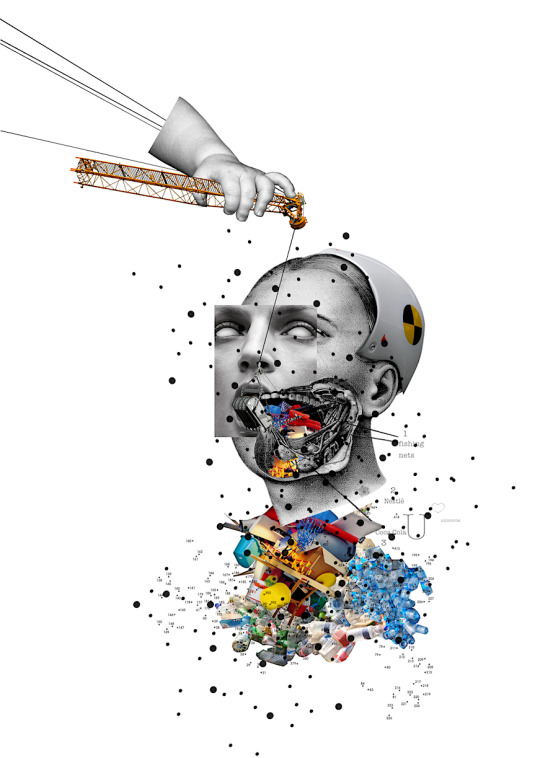
eucanthos
elemental traces no.8 ∈ 42 / Pandora
Nagi Sakai: Guinevere van Seenus for Zoo Magazine Fall 2017 [indestructible beauty]
Vintage Medical Anatomy Illustration
Daniel Firman: Gathering 2000
Sean Smylie Anatomy WIP
Liebherr HS 8040.1 Duty cycle crawler crane
Baby's hand (exploited innocence)
70% of plastics marine pollution comes from the land. The rest 30% is mostly fishing nets.
Erysichthon/Erisichthon (Ἐρυσίχθων means "earth-tearer"):
Demeter punished Erysichthon for cutting down a sacred Oak for profit, by sending Limos (female monster-spirit of unrelenting and insatiable hunger), to possess him. He sold all his possessions and even his daughter Mestra -Μήστρα- taking advantage of her shape-shifting power (Poseidon's gift) to sell her numerous times, but there was never enough. Eventually, Erysichthon ate himself.
Sep 07, 2021 post revisited
#eucanthos#collage#appropriation#Guinevere van Seenus#anatomy#plastic#pollution#dots#42#Erysichthon#mythology#monsters
21 notes
·
View notes
Text

Jodie Comer Hunger Magazine 2021 outtake
59 notes
·
View notes
Text
Throwback Thursday Saturday
Thank you @johnbly for the tag to share a fic that's more than a week old! I'm going to share The Rubicon, a Hunger Games fic I published back in 2021.
Summary
Annie has a storm to face, and Finnick's determined that they'll face it together, no matter what a sleazy magazine editor—or Snow—have to say about it.
Excerpt
"Well, well, well." Enler tsks at Finnick while shaking his head.
"Took you long enough to show up, Odair. The ladies were almost giving up on you."
Finnick pastes a smile on his face. "Sorry. Like I said, I had business."
Enler scoffs. "What business could you have tonight? Your only job is to look pretty."
Finnick shrugs and looks away like he's going to make a break for it, but Enler blocks him with a timely move to take a glass of champagne from a roving Avox. "But of course, I understand if you wanted to wait on Miss Cresta."
Finnick tries not to react, but he can't help glance at Enler. Enler's eyes, sharp as a cat's and surgically-modified to resemble slits, glimmer with triumph.
Read the rest on AO3
Tagging @xxluckystrike @wexhappyxfew!
2 notes
·
View notes
Text

“The Long Road to a Juneteenth Museum” by James Rusell, from the January/February 2024 issue of Texas Observer Magazine:
(Museum renderings courtesy BIG)
When Fort Worth activist Opal Lee was invited in 2021 to stand alongside President Joe Biden as he signed the bill making Juneteenth a federal holiday, “I could’ve done a holy dance,” the 97-year-old told the Texas Observer recently. “But the kids said they didn’t want me twerking.”
Dancing—and twerking—aside, Lee is clearly used to ambitious projects. She’s often referred to as the grandmother of Juneteenth, mostly because of her 1,400-mile walk, Fort Worth to Washington, D.C., September 2016 to January 2017, seeking recognition for the day that has come to represent freedom for American Blacks. Although the Emancipation Proclamation took effect in 1863, slaves couldn’t be freed where the countryside was still under Confederate control. That ended in Texas on June 19, 1865, when Union troops arrived in Galveston and brought the news.
The latest project of Lee and her allies, to create a museum in Fort Worth honoring Juneteenth, is turning out to be equally ambitious. What began as a modest collection in a small house in the neighborhood where Lee grew up has become a key part of an effort to revitalize Fort Worth’s Historic Southside neighborhood. The most recent and much grander incarnation of the museum is due to open in 2025.
Along the way, the honors paid to Lee—a Nobel Peace Prize nomination, a painting of Lee for the National Portrait Gallery, and the Emmy Award-winning documentary Opal’s Walk for Freedom (2022)—have helped bring attention to that neighborhood, just as they did to the Juneteenth campaign. But tragedy and poverty have held hands there for a long time, and revitalization efforts sometimes find tough sledding.
Lee’s roots run deep into the soil of the Southside and into personal memories of another June 19. On that day in 1939, a mob of racists—about 500 people, according to the Fort Worth Star-Telegram—raided the house there that Lee, her parents, and two brothers, had recently moved into. The family promptly moved out.

A portrait of Opal Lee from the National Portrait Gallery (Courtesy of Talley Dunn Gallery)
The raid was traumatic. Lee told the Star-Telegram in 2003 that afterward her family was “homeless and then living in houses so ramshackle they were impossible to keep clean.” The experience led her to become first an advocate for affordable housing and later an activist regarding homelessness, hunger, and Juneteenth.
Eighty years after the raid, another violent incident a few blocks away would inspire a new generation of Southside activists.
Lee, a retired elementary school teacher and counselor in the Fort Worth school district, also spearheaded the rebuilding of the Metroplex Food Bank (now the Community Food Bank), founded the urban Opal’s Farm, and served on numerous local boards, including the Tarrant Black Historical and Genealogical Society.
Through all that time, she worked to draw attention to Juneteenth. “She was always teaching about Juneteenth” in middle school, said Sedrick Huckaby, the Fort Worth artist who painted Lee for the National Portrait Gallery. “She was always teaching about our heritage and about taking pride in who you are.” Allies like the late Rev. Dr. Ron Myers, a Mississippi doctor and minister, lobbied legislatures across the country and in 1997 helped pass a congressional joint resolution recognizing the holiday. Lee worked on building local support.
In 2014, on the 150th anniversary of Juneteenth, she asked friends and family to donate to a celebration of that, in lieu of buying presents on her birthday. A story in Fort Worth Weekly called her “part grandma, part General Patton” in leading the effort. Two years later, she was putting on her walking shoes for her own personal march on Washington. “If a lady in tennis shoes walked to Washington, D.C, maybe people would pay attention,” she said in her deep, raspy voice, recalling her motivations for the trek. It took another four years after her walk, but the national holiday happened.
Juneteenth has been celebrated by Black Americans for more than 100 years, including in Fort Worth. Texas was the first to designate it a state holiday, in 1980. Since 2020, 26 states, propelled by the murders of Black citizens George Floyd and Breonna Taylor at the hands of police, have followed Texas’ lead, according to the Pew Research Center.
In Fort Worth, Lee and volunteer Don Williams had been working for years to gather artifacts related to local Black history and Juneteenth, including paintings by local Black artist Manet Harrison Fowler, scrapbooks chronicling local Juneteenth celebrations, and memorabilia from the locally filmed movie Miss Juneteenth. Lee inherited a house from her late husband Dale, a retired school district principal, and turned it into the first version of the Juneteenth museum. It housed the growing collection and hosted multiple Juneteenth events and, at one point, computer classes.
While the collection grew, the building, run by volunteers, was deteriorating. Like most public places, it closed in 2020 as COVID-19 spread. After the pandemic, it did not reopen, and the collection was moved out. Then early on the morning of January 11, 2023, it caught on fire. The remains were demolished to make way for the new museum.
Around 2019, Lee, granddaughter Dione Sims, and former Fort Worth Chamber of Commerce executive Jarred Howard had started talking about the possibility of a new Juneteenth Museum. They began buying land around the site of the old house. Howard long had a vision to help his old stomping grounds and wanted to both commemorate the holiday and spur economic development. Well acquainted with developers and architects from his Chamber days, he solicited requests for proposals for a building that could meet those goals. First, local architect Paul Dennehy designed a five-story building with a gallery, event space, and residences. In early 2020 it was pitched to neighborhood association leaders. Too tall, they said, and out of step with the neighborhood. In 2021, local architects Bennett Partners produced a plan for a playful mixed-use campus, estimated to cost about $30 million to build.
In 2022, a new plan, bigger in scope than Lee could have imagined two decades ago, was unveiled. The current proposal is for a 5-acre complex housing a National Juneteenth Museum, with a theater, restaurant, art galleries, and a “business incubator” space to spur Southside entrepreneurship, designed by the internationally renowned architecture firm Bjarke Ingels Group (BIG). The price tag is an estimated $70 million. So far, the nonprofit National Juneteenth Museum, formed in 2020, has raised about $30 million of that, mostly from major donors and foundations, Lee said.
Douglass Alligood, a partner at BIG and the chief architect of the currently planned museum, got an earful during his field work on the project, including from Lee’s friends and supporters. In multiple visits, he met with Lee as well as neighborhood leaders. The conclusion: The museum had to represent the community and not be divorced from it.
“We were inspired by the neighborhood typology—the homes that feature historic gabled silhouettes and protruding porches, also known in context as a ‘shotgun’ house,” he said. “Neighborhood groups and community members found that, together, the BIG and KAI Enterprises [the local architecture firm] design teams demonstrate a deep understanding of the Juneteenth story and commitment to work with the local community to celebrate the holiday’s history and local culture of the Historic Southside.”
Eleven rectangular glass-clad building segments, with peaks and valleys of varying heights, will create a star-shaped courtyard in the middle. “The ‘new star,’ the nova star represents a new chapter for the African-Americans looking ahead towards a more just future,” Alligood said.
Fine, locals said, but what people there really need is a grocery store.

It was a cold morning in early October, and Patrice Jones needed help unloading herbs. She was in the courtyard of Connex, a new three-story business and retail complex about two blocks from the planned site of the museum. Jones and a group of volunteers, mostly in their 20s and 30s, from Southside Community Gardens, are planting their 79th and 80th backyard vegetable gardens in the neighborhood, she said proudly. It’s pick-up day for those who’ve already established gardens.
The initiative is part of the larger By Any Means 104 effort, named for the 76104 zip code, and co-founded by Jones in 2020. The group’s focus on local issues includes addressing the lack of fresh food in the area instead of waiting for a grocery store. Jones, a feisty advocate and former claims adjuster, has run it full time since 2021. If the city can’t get them a grocery store, she said, they’ll teach residents to grow their own food.
The Juneteenth Museum is important, Jones said, between handing out herbs and greeting volunteers. But in her circles, she said, people also ask, “Can we get a health clinic? Can we get a pharmacy?” And of course, “Can we get a grocery store?”
According to a 2018 University of Texas Southwestern Medical Center report, the 76104 zip code has the lowest life expectancy rate in Texas and a high maternal mortality rate. It’s also a victim of what Jones calls “food apartheid,” a term she prefers to “food desert,” an indicator of an area with little access to fresh foods. Desert implies it’s natural; apartheid, she said, is an intentional act. She blames city government and its white-dominated culture.
But hunger is not a sufficient reason for a grocery chain to decide where to open a store, even if it could be part of a historical complex.
Grocery store owners “use different metrics,” including population density, said Stacy Marshall, president of Southeast Fort Worth, Inc., an economic development group. “We can’t yet make a compelling case.” The area needs more housing, he said. “Build density—rooftops—and grocery stores come.”
Marshall is a force in bringing new development to the southeast part of the city, a large historically and ethnically diverse area that includes the Historic Southside.
Since he took the job a decade ago, “development has gone gangbusters,” he said. But development has also brought gentrification: “It’s so expensive to purchase dirt here and get a single-family home,” he said. One Dallas real estate firm put together a $70 million deal for a mixed-use development in the area, but it has stalled.
The Juneteenth museum site is within the Evans-Rosedale urban village, a city designation focused on bringing investment to the area. It’s seeing an uptick in interest from developers, but nowhere near what’s been promised by local officials.
“There have been attempts in the past. There’s the Evans Avenue Plaza, but most people don’t know about it,” said Bob Ray Sanders, communications director for the Fort Worth Black Chamber of Commerce. The plaza, also part of the Evans-Rosedale village, is meant to be a community gathering space and includes a new library. About a mile away is the Hazel Harvey Peace Center for Neighborhoods, which houses numerous city offices.
Many of the neighborhood’s nagging problems date to the mid-20th century, when integration meant, ironically, the loss of many black-owned businesses, while highway construction—as it did in many American cities—cut off Fort Worth’s Black community from downtown and wealthier neighborhoods. “By doing that, people on the Westside [turned] a blind eye to people on the Eastside,” Sanders said.
Housing construction seems to be picking up, mostly on an infill basis. But while developers are buying homes, Marshall said, they are mostly sitting on them and waiting until they can get higher prices.
Longtime assistant city manager Fernando Costa said development work in historic urban districts presents more challenges than creating new neighborhoods from pastureland. Beyond the physical complications of older infrastructure, historic preservation concerns and, often, environmental problems left over from earlier development, Costa said, such projects “require getting existing neighborhood involvement.”
There’s also the issue of crime. According to the Fort Worth Police Department, nearly 560 crimes were reported in the 76104 zip code between mid-May and late November 2023. Assault, larceny, drug and alcohol violations, and vehicle break-ins made up more than three-quarters of the reports. That’s compared to 165 in the same time period in the mostly-white, wealthy 76109 zip code in West Fort Worth.
In the early morning of October 12, 2019, white police officer Aaron Dean, responding to a welfare check at the house, killed 28-year Black woman Atatiana Jefferson, who was playing video games with her nephew. Dean was later found guilty of manslaughter and sentenced to 11 years in prison.
Jefferson’s murder lit a fire under a younger generation of activists who aren’t waiting for change, such as Jones, who also worked to get police accountability in response to the murder, and Angela Mack, whose doctoral thesis is about Jefferson and the neighborhood.
“I’m a good, ol’ fashioned Funkytown Black nerd,” said Mack, an instructor in the comparative race and ethnic studies department at Texas Christian University, where she received her doctorate in English rhetoric.
After Jefferson’s murder, Mack changed her thesis topic to address that tragedy. She saw that, between her mother and the national media, two different stories were being told.
“When we’re thinking about the Southside, we think about Fairmount and the Medical District in terms of revitalization. But when you cross the highway, you’re in an area with crime and poverty,” she said, drinking a latte at Black Coffee, one of the few coffee shops in the area. “When people [look] at the community, people are looking at what’s not here. It’s a deficit model of communication instead of seeing the good that’s here.
“I’m not anti-development,” she said, but economic development shouldn’t be the museum’s purpose.
“When you’re building something, it should not be [a question of] how many people we employ, but how does it help define the Southside? The development will come. I’m concerned about who controls the narrative,” she said. “The main focus should be how does this speak about our history and heritage.”
Jones also worries that history will be lost. She’s afraid that rising property values will push out poor people.
Sims has heard those concerns before. Property taxes go up with any new development, she said. And everyone’s going to complain, even if they want change.
When the museum opens in 2025, Lee just wants to make sure she’s there to see it.
“I’m looking forward to it,” she said. She’d be 99. “I hope I’m still here.”
#black history#Black History Month#Texas#texas history#fort worth#north texas#juneteenth#museum#museums
2 notes
·
View notes
Text

Gillian Anderson – Hunger Magazine Taking Back Control Issue 2021
6 notes
·
View notes
Photo


By Jordan Rossi for Hunger Magazine - 2021
10 notes
·
View notes
Text



Photoshoot for Hunger magazine, December 2021
6 notes
·
View notes
Photo

Today In History Dick Gregory an African American comedian, civil rights leader and vegetarian activist, was born in St. Louis, MO on this date October 12, 1932. Gregory no-holds-barred brand of comedy in the 1960s attacked racial prejudice, bigotry and racism in the United States. By addressing his hard-hitting satire to white audiences, he gave a comedic voice to the rising civil rights movement. He generated particular attention for his many hunger fasts. At this time he became a vegetarian, a marathon runner, and an expert on nutrition. He soon began a successful business venture with his nutritional product, the “Bahamian Diet,” around which he built Dick Gregory Health Enterprises, Inc. Through his company, he targeted the lower life expectancy of Black Americans, which he attributed to poor nutrition, drugs and alcohol abuse. Gregory wrote many books, including Nigger: An Autobiography (1964) and No More Lies: The Myth and the Reality of American History (1971). He made a brief return to the comedy circuit in the mid-1990s. The One and Only Dick Gregory, a documentary about his life and career, appeared in 2021. CARTER™️ Magazine carter-mag.com #wherehistoryandhiphopmeet #historyandhiphop365 #cartermagazine #carter #dickgregory #comedy #blackhistorymonth #blackhistory #staywoke #history https://www.instagram.com/p/CjnMlOoLueA/?igshid=NGJjMDIxMWI=
#wherehistoryandhiphopmeet#historyandhiphop365#cartermagazine#carter#dickgregory#comedy#blackhistorymonth#blackhistory#staywoke#history
351 notes
·
View notes
Text



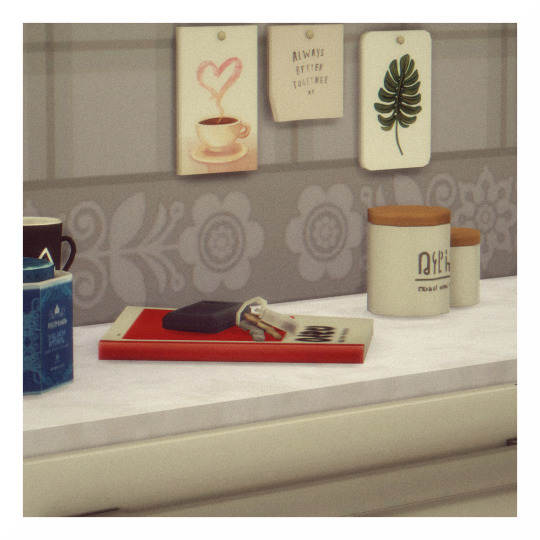
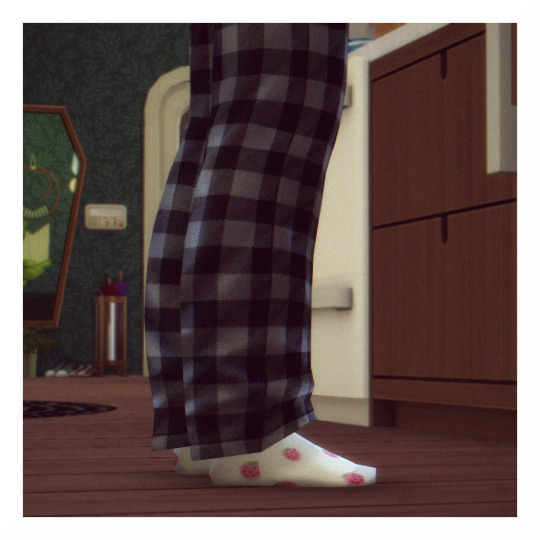
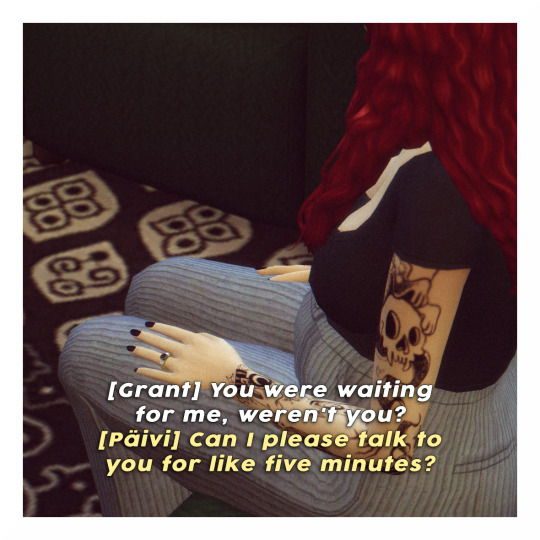

next // previous
may 25, 2021
7:30 p.m.
grant's house
watching television lost its glimmer hardly half an hour after grant stressed himself out again by checking his phone, so he escapes his mental prison by doing what he should have done in the first place. he braves whatever fears he still has and heads upstairs to play skyrim like he intended. so what if he does run into päivi later on?
skyrim more fun than brooding all afternoon and he’s quickly sucked into the game again with no external thoughts even crossing his mind until hunger brings him back to consciousness. he exits the game, realizes it’s well after 7 o’clock, and leaves to fetch something from the kitchen.
he never heard the creak of the front door, but there’s no doubt päivi is back from work by now. grant spies her shoes by the door and her leather bag hangs in its place on the coat rack. when he goes to open the refrigerator, he can’t help but notice her car keys and a magazine or something of the sort laying on the counter.
without thinking, grant abandons his search for sustenance and picks up the paper item.
he looks for only a moment before the paper morphs into a hot potato and he discards it in a hurry, putting it back under her car keys where it belongs.
planned parenthood.
it was a planned parenthood pamphlet.
not that he’s surprised, of course, or against the purpose of the pamphlet. he knows why she’d have it.
but still.
grant turns his back to it and awkwardly opens the fridge from the side, refusing to acknowledge his mistake of rifling through päivi’s things.
he ends up reheating another serving of the homemade macaroni and cheese his grandmother sent him back with. he saved it for last, and sure, he’s eaten in three days in a row, but he could never get sick of eating it. plus he decides not to banish himself to the basement. no matter what, he will walk back into the office, sit down, and eat his dinner in peace. he bought the house with his own damn money and he’s going to use it.
grant steps out into the living room, food in hand, and–
oh.
päivi is sitting on the couch. just sitting there twiddling her thumbs expectantly.
“you were waiting for me, weren’t you?” grant asks, gripping tighter onto the bowl in his hands until his fingers blanch cold white.
“can i please talk to you for like five minutes?” she pleads.
her tone is remarkably different than it has been every other time he’s spoken to her in the last two weeks. it’s more like the päivi he knows well. soft, gentle, relaxed. and for a moment her demeanor fools him. he almost abandons his plans to instead join her on the couch for a conversation, but no, he stands his ground. grant remains firm where he is and stares straight ahead at her, saying nothing.
“okay, fine.” she purses her lips, frowning. “i get it. i, um...i thought maybe...i don’t know, we’ve been together for a long time. i thought it’s only fair we settle affairs.”
“what affairs? like the one you had?”
she plays the silent game, too, for a while. päivi stares back at him, waiting until he cracks, though he never does.
but the tension in the room is shattered by an ear-splitting crash of thunder and the rattle of the house as the energy flows through it.
“never mind.” päivi waves him off with a flick of her wrist and a callous eye-roll. “anyway, you’ll be glad to know i'll be out of here in a couple weeks. i have some, um, things to take care of first, but don’t worry about it. i'll have my shit out of here before you even know it.”
grant sighs. “good.”
he vanishes and shuts himself away in the office, though the immediate sound of päivi’s crying as he closes the door is enough to steal his appetite and replace it with churning nausea. grant sits there at the desk for a few minutes stirring his food with a spoon idly, not eating a bite.
it’s over. he knows it is. he came to that conclusion days ago. nothing could or should salvage this. but maybe he could have been nicer. he could have heard her out that time. she had been palatable. she could have meant well this time.
grant anxiously shrugs off the thoughts as a chill runs down his spine. his hand quivering, he finally takes a bite of food. a second later, the bedroom door across the hall slams shut.
#ts4#the sims 4#sims 4#sims 4 story#ts4 screenshots#simblr#hlcn: everything the stars promised#first of all: i had to approximate the pamphlet#second: iykyk but do NOT worry because grant is NOT a pro-lifer!! he's pro-choice!! he's just awkward in this particular scene obviously!!#third: EYE SPY THE ENGAGEMENT RING#also can we appreciate grant's strawberry socks? <3#gamer boy strawberry socks <3#holocene.png#holocene.docx#hlcn: grant#hlcn: päivi
22 notes
·
View notes
Text
Andy Sandford EPK

Bio: Andy Sandford is a comedian who got funny in Atlanta, GA. He then moved to New York City, where he established himself as one of NY’s top tier comics. In 2021, Andy moved back to Atlanta to tape his latest special, Basket Case, which is currently streaming on 800 Pound Gorilla’s YouTube Channel. Sandford has performed his jokes on Conan and The Late Late Show with James Corden, and is a staple on XM/Sirius radio. His debut album, Me the Whole Time; was one of Vulture’s “9 Best Standup Albums of The Year.“ His first hour special, “Shameful Information (2018),” was ranked one of the “Top 50 Standup Specials on Amazon Prime.” Andy has even played an animated version of himself on Adult Swim’s Aqua Teen Hunger Force. The Village Voice called him, “one of New York’s comedic gems;” a nice gesture, but not enough to keep him in New York, for Andy now calls Atlanta home base (sorry NY).
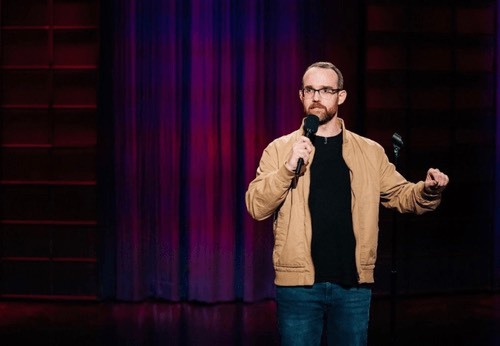
-“It’s a testament to Sandford’s deep well of material that midway through his album, he’s telling stories that most comics would save for their closers” - The Spit Take
-“It’s been said that the best comedy comes from pain. If that’s really the case, then somebody must have kicked the shit out of Andy Sandford…Sandford is a skillful linguist who carefully plays with pitch, tone and timing to spice up his jokes” - Creative Loafing Magazine
youtube
3 notes
·
View notes
Note
They got PETA singing their glory over adopting the beagle
https://twitter.com/baronessbruck/status/1562602143537696768?s=21&t=tzMp4-bd7SKL1JYj92-s3g
PETA commenting on comments saying how great they are too!
This is the same organization claiming its opposition to factory farming, fur farming, animal testing, and the use of animals in entertainment. It also campaigns for a vegan lifestyle and against eating meat, fishing, the killing of animals regarded as pests, the keeping of chained backyard dogs, cock fighting, dog fighting, beekeeping, and bullfighting, among other things.
The same PETA that protested at the Westminster Kennel Club Dog Show in 2009 dressed up in Ku Klux Klan robes and passed out brochures implying the Klan and American Kennel Club have the same goal of "pure bloodlines".
The same PETA that considers the word pet to be "derogatory and patronises the animal", and prefers the term "companion" or "companion animal". "Animals are not pets," Newkirk has said
The same PETA that supports hearing dog programs when animals are sourced from shelters and placed in homes, but opposes seeing-eye-dog programs "because the dogs are bred as if there are no equally intelligent dogs literally dying for homes in shelters, they are kept in harnesses almost 24/7”
The same PETA that opposes animal testing—whether toxicity testing, basic or applied research, or for education and training—on both moral and practical grounds. Newkirk told the Vogue magazine in 1989 that even if animal testing resulted in a cure for AIDS, PETA would oppose it. The group also believes that it is wasteful, unreliable, and irrelevant to human health, because artificially induced diseases in animals are not identical to human diseases. They say that animal experiments are frequently redundant and lack accountability, oversight, and regulation. They promote alternatives, including embryonic stem cell research and in vitro cell research.
In 2008 and in 2014, the same PETA conducted an advertising campaign linking milk with autism. Their "Got Autism?" campaign, a play on words mocking the milk industry's Got Milk? ad campaign that ran from 1993 to 2014, stated "Studies have shown a link between cow's milk and autism."
The same PETA also claimed milk was strongly linked to cancer, Crohn's disease, and other diseases. In 2014, PETA's Executive Vice President confirmed their position, and additionally stated that dairy consumption contributes to asthma, chronic ear infection, constipation, iron deficiency, anemia, and cancer.
When pressed, the same PETA cited two scientific papers, one from 1995 and one from 2002 using very small samplings of children (36 and 20), and neither showed a correlation nor a causation between milk and autism. Newer studies from 2010 and 2014 have shown no association between dairy and behavior in autism. Despite having been corrected, a PETA representative said that they will still keep the information on their website "because we have heard from people who have said it contains helpful information. Many families have found that a dairy-free diet can help children with autism, and since the consumption of dairy products has been linked to asthma, constipation, recurrent ear infections, iron deficiency, anemia, and even cancer, dumping dairy is a healthy choice that everyone can make."
The same PETA's campaign has received backlash from the autism community. A 2008 PETA billboard was taken down by the Autistic Self Advocacy Network. In 2017, British food writer, journalist and hunger relief activist Jack Monroe, demanded PETA remove their recipes from their website "with immediate effect coz I wrote them with my autism". PETA removed their recipes, but did not remove the "Got Autism?" article from their website until 2021. It has been argued that the frowny face in the campaign image negatively stereotypes autistic people.
The same PETA has been critical of Australian wildlife expert and zookeeper Steve Irwin. In 2006, when Irwin died, PETA Vice President Dan Mathews said Irwin had made a career out of antagonizing frightened wild animals. Australian Member of Parliament Bruce Scott was disgusted by the comments and said PETA should apologize to Irwin's family and the rest of Australia, and "Isn't it interesting ... how they [PETA] want to treat animals ethically, but cannot even think for a minute whether or not their outlandish comments are ethical towards their fellow human beings."
In 2019, the same PETA critisized Google for creating a slideshow Google Doodle of Steve Irwin posthumously honoring his 57th birthday. PETA started a Twitter campaign against Irwin, with several tweets criticizing Google for forwarding a dangerous message, and wrote that Irwin was killed while harassing a ray and that he forced animals to perform. A Washington Post editor wrote "PETA can add 'insulting a deceased cultural icon' to its infamous repertoire."
The White Coat Waste Project, a group of activists that hold that taxpayers should not have to pay $20 billion every year for experiments on animals, highlighted that the National Institute of Allergy and Infectious Diseases provided $400,000 in taxpayer money to fund experiments in which 28 beagles were infected by disease-causing parasites. The White Coat Project found reports that said dogs taking part in the experiments were “vocalizing in pain” after being injected with foreign substances. Following public outcry, the same PETA made a call to action that all members of the National Institute of Health resign effective immediately and that there is a "need to find a new NIH director to replace the outgoing Francis Collins who will shut down research that violates the dignity of nonhuman animals."
Because of the same PETA's euthanasia rates at their "shelter of last resort", attorney Nathan Winograd, advocate for the No Kill movement, calls Newkirk of PETA "The Butcher of Norfolk".
Yikes...
11 notes
·
View notes
Photo





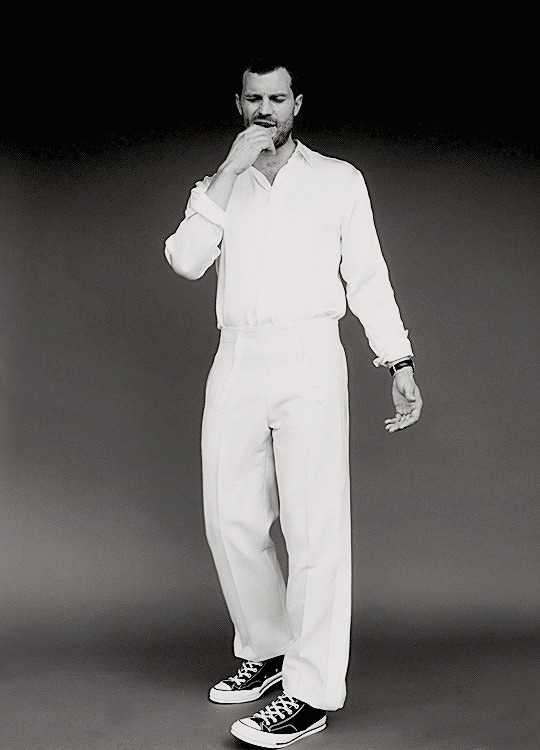

JAMIE DORNAN
━ Photoshoot for Hunger Magazine (September, 2021).
11 notes
·
View notes













